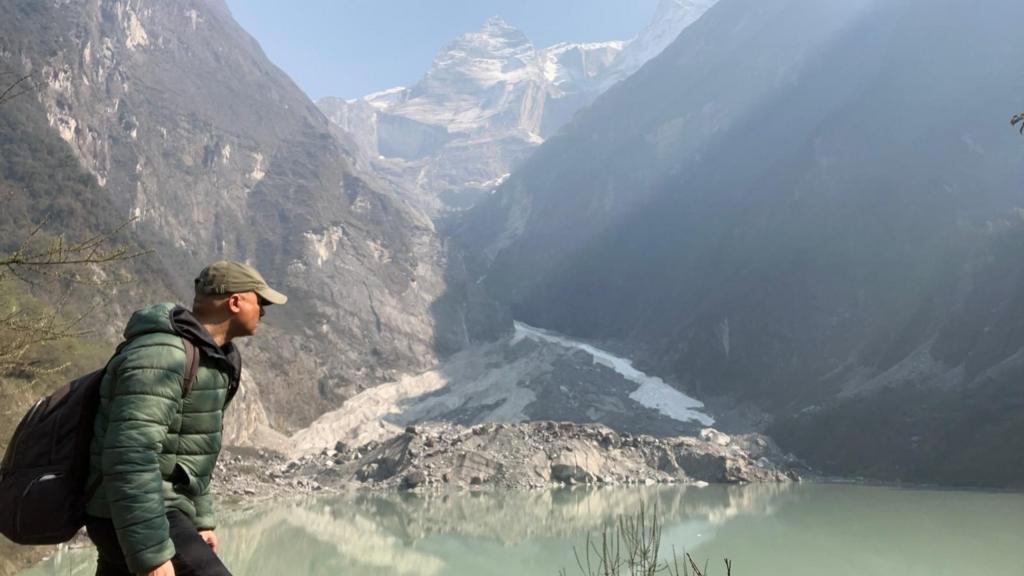Having grown up in Kathmandu, Nepal, with breathtaking Himalayan views, I now find those vistas increasingly obscured by severe air pollution.
Even during traditionally clear spring and autumn months, the haze significantly limits visibility.
Last April, my international flight circled Kathmandu almost 20 times before landing due to poor visibility.
My hotel, situated at a height usually offering mountain views, remained shrouded in haze throughout my two-week stay.
Even from Nagarkot, a renowned vantage point, the mountains were completely invisible, hidden behind a persistent layer of smog.
Yogendra Shakya, who has run a Nagarkot hotel since 1996, confirms this, stating, “I’ve had to rebrand my hotel, shifting from ‘sunrise, sunset and Himalayas’ to a focus on history and culture.”
Similarly, a recent trek in the Annapurna region offered little better, with the majestic peaks largely concealed.
Scientists attribute this to increasingly intense and prolonged haze, reducing visibility to under 5,000m (16,400ft).
This haze, a mixture of pollutants including dust and smoke, stagnates during the lengthening dry season, exacerbated by climate change.
While the monsoon season (June-September) traditionally obscures the mountains with cloud cover, March-May and October-November were once peak seasons for clear views.
However, rising temperatures, reduced rainfall, and worsening air pollution are now causing thick haze even in spring, starting as early as December.
Lucky Chhetri, a prominent Nepali trekking guide, reports a 40% drop in business due to these conditions, citing instances where trekkers had to be compensated for lack of Himalayan views.
An Australian tourist, John Carrol, a veteran visitor since 1986, describes the lack of mountain views as a “major let-down,” noting the significant change over the past decade.
Krishna Acharya, from the Trekking Agents Association of Nepal, highlights the severe impact on the trekking industry, with many operators considering career changes.
The situation is similar on the Indian side of the Himalayas, with hoteliers and tour operators reporting denser and more persistent haze.
Malika Virdi, from a community tourism business in Uttarakhand, India, attributes this to longer dry spells and infrequent heavy rainfall.
Despite this, Ms. Virdi notes that many tourists persist, returning in hopes of clearer views.
While the western Himalayas in Pakistan have been relatively less affected due to their distance from major cities, even there, visibility is declining.
Asif Shuja, former head of Pakistan’s environmental protection agency, confirms that mountains once visible from cities like Peshawar and Gilgit are now frequently obscured.
South Asian cities consistently rank high on global air pollution lists, impacting public health and causing widespread disruption.
Vehicular and industrial emissions, construction dust, open burning, and agricultural residue burning contribute significantly to this pollution.
These pollutants are trapped by atmospheric conditions, preventing dispersion. Increased forest fires, due to longer dry seasons, further exacerbate the problem.
Dr. Someshwor Das from the South Asia Meteorological Association confirms the increasing frequency of haze and dust storms, projecting this trend to continue.
Pokhara, a major tourism hub in Nepal, recorded 168 hazy days in 2024, a sharp increase from previous years (23 in 2020, 84 in 2021).
Experts consider the Himalayas the most affected mountain range globally, due to their location within a densely populated and polluted region.
This means the iconic Himalayan views might soon be primarily experienced through photographs and postcards.
Trekking guide Ms. Chhetri poignantly summarizes the situation: “We do business with guilt, unable to deliver what our clients pay for, and there’s nothing we can do about the haze.”
Get our flagship newsletter with all the headlines you need to start the day. Sign up here.

